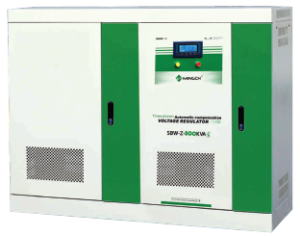Automatic Voltage Regulator
Automatic Voltage Regulator (AVR)
An Automatic Voltage Regulator (AVR) is an electronic device used to maintain a constant voltage level to electrical equipment. It automatically regulates and stabilizes the output voltage of generators, transformers, or other voltage supply systems, ensuring that it stays within a desired range, regardless of variations in input voltage or load conditions.
Key Functions of an AVR
1. Voltage Regulation: Keeps the output voltage stable even when the input or load changes.
2. Overvoltage/Undervoltage Protection: Prevents damage to equipment due to high or low voltage.
3. Improved Equipment Performance: Maintains consistent performance of electrical devices.
4. Noise Filtering: Reduces voltage spikes and electrical noise.
Common Applications
1. Power generators: Ensures consistent output voltage regardless of load.
2. UPS systems: Protects sensitive devices like computers and medical equipment.
3. Industrial machinery: Maintains stable operation under varying power conditions.
4. Home appliances: Protects TVs, refrigerators, and air conditioners from voltage fluctuations.
Types of AVRs
1. Servo Motor Type: Uses a motor to adjust voltage.
2. Static Type (Electronic): Uses electronic components like SCRs or IGBTs—faster response.
3. Digital/Intelligent AVR: Uses microcontrollers or DSPs—more precise and programmable.



